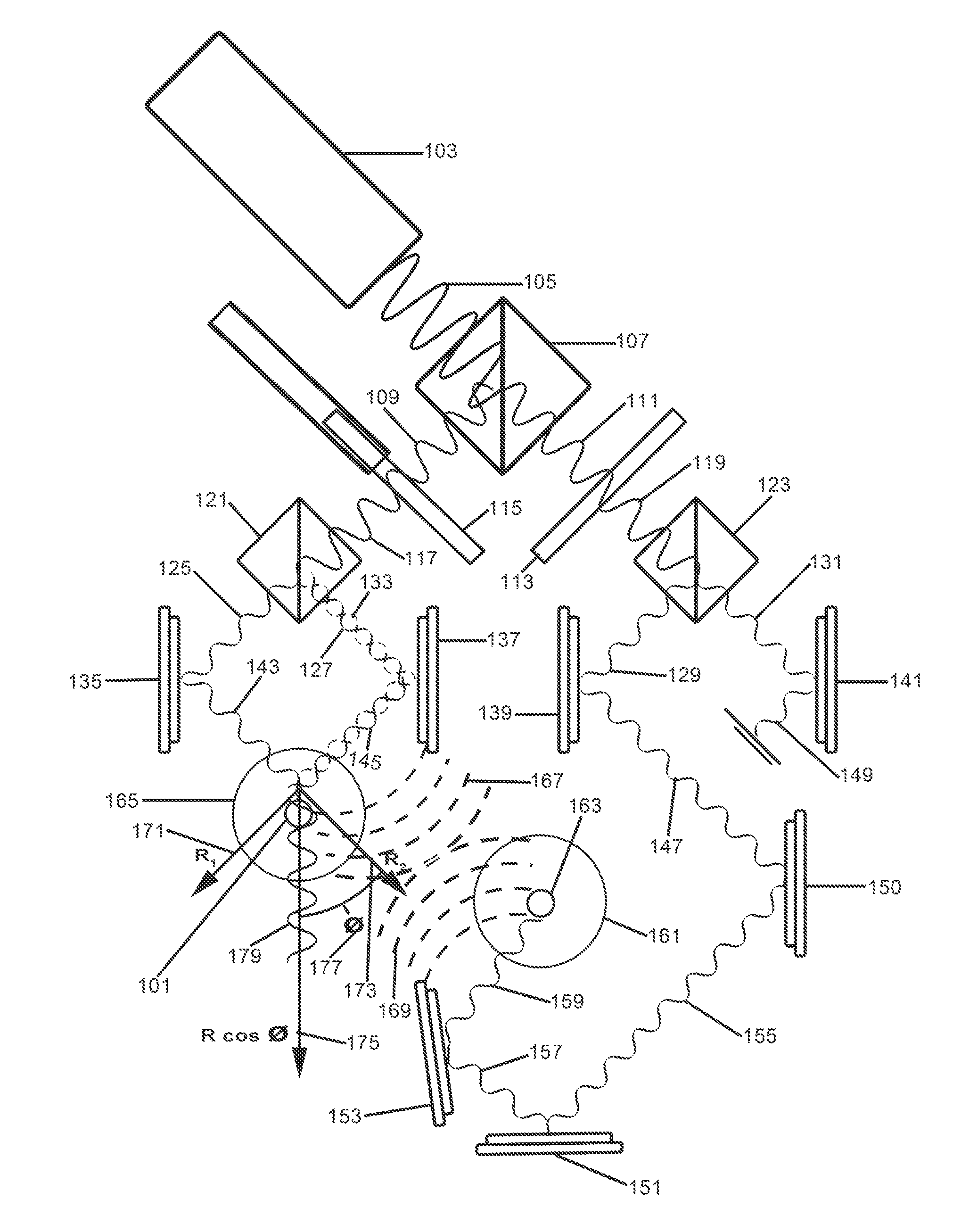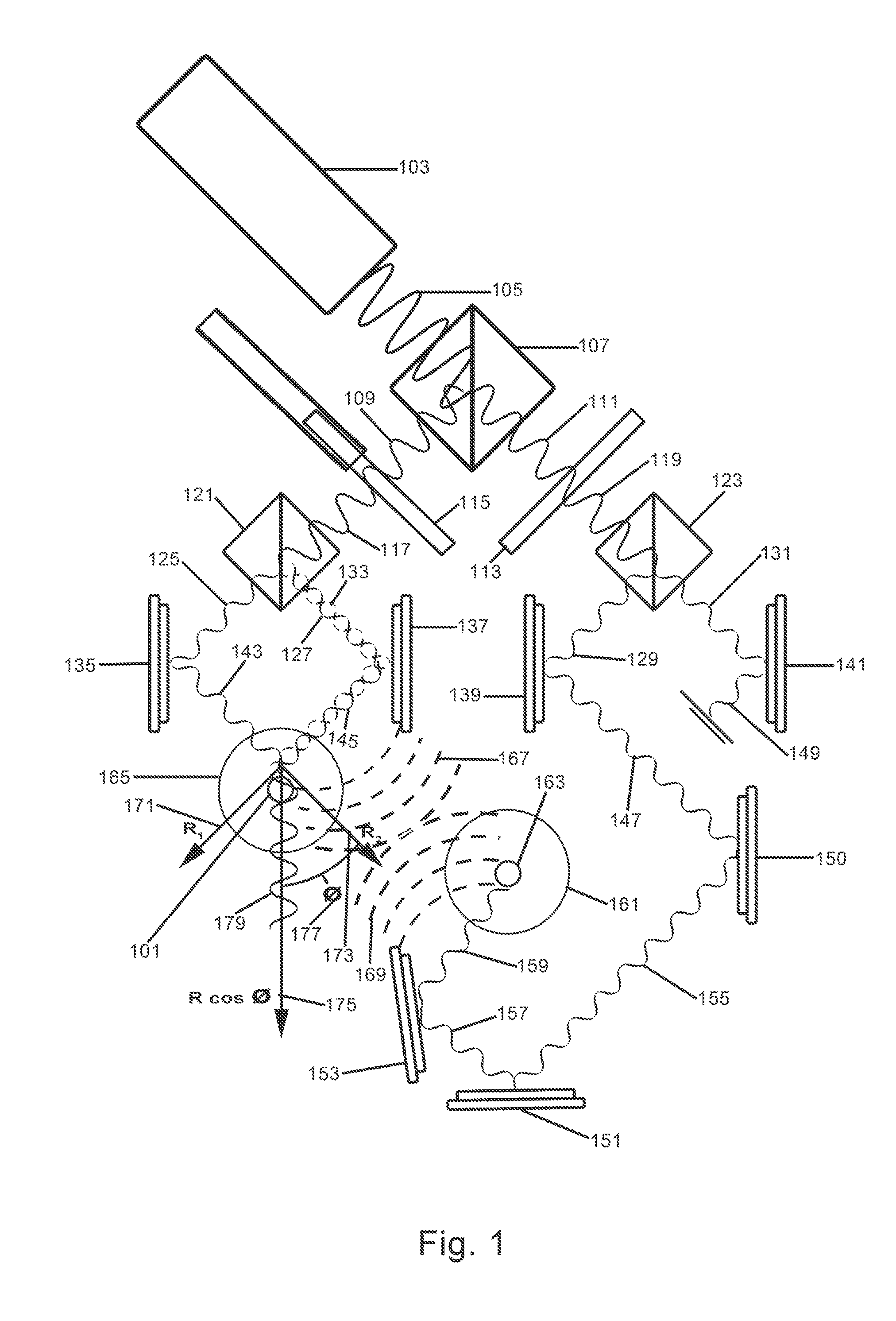Radiation Therapy Techniques Using Targeted Wave Superposition, Magnetic Field Direction and Real-Time Sensory Feedback
a targeted wave superposition and targeted wave technology, applied in the field of medical science, can solve the problems of collateral damage to healthy tissue, too great a risk of injury or earlier death, and even less use of systemic radioisotopes
- Summary
- Abstract
- Description
- Claims
- Application Information
AI Technical Summary
Benefits of technology
Problems solved by technology
Method used
Image
Examples
Embodiment Construction
[0033]FIG. 1 illustrates a preferred embodiment of aspects of the present invention related to the delivery of enhanced electromagnetic radiation to a target, such as a tumor embedded in the healthy tissue of a medical patient. The location of the exemplary target, in FIG. 1, is shown by a cross-sectional side view through a central plane, as a spherical structure, target 101. In the upper-left corner, by the same view, an originating source 103, of electromagnetic radiation, is pictured. This source may take a variety of shapes, forms and configurations which may be suitable for creating, defining and releasing a source of electromagnetic or particle radiation, such as those used in LINAC machines. A sine wave emanating from the lower right side of originating source 103 depicts an initial radiation emission 105. Initial radiation emission 105 may be of any form of radiation with wave characteristics, but, preferably is tissue-penetrating and ionizing radiation, such as X-rays or g...
PUM
 Login to View More
Login to View More Abstract
Description
Claims
Application Information
 Login to View More
Login to View More - R&D
- Intellectual Property
- Life Sciences
- Materials
- Tech Scout
- Unparalleled Data Quality
- Higher Quality Content
- 60% Fewer Hallucinations
Browse by: Latest US Patents, China's latest patents, Technical Efficacy Thesaurus, Application Domain, Technology Topic, Popular Technical Reports.
© 2025 PatSnap. All rights reserved.Legal|Privacy policy|Modern Slavery Act Transparency Statement|Sitemap|About US| Contact US: help@patsnap.com



